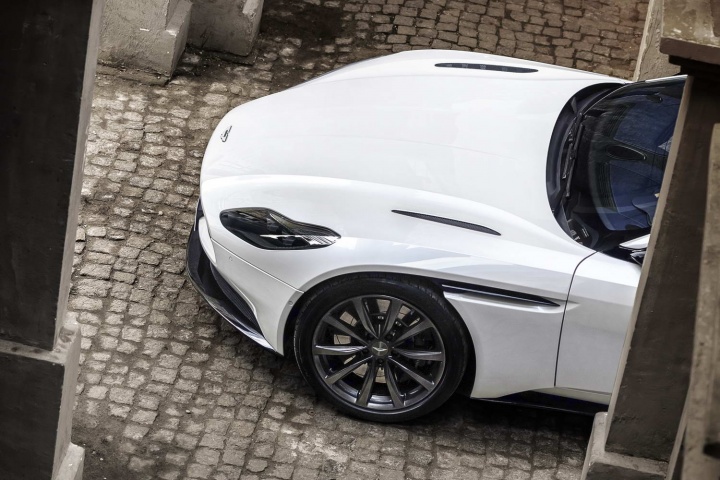What's the news?
Aston Martin has announced the arrival of a second version of its DB11, powered by a Mercedes-AMG supplied twin-turbocharged V8 petrol engine. This complements the existing V12-engined model and will be a little cheaper to buy, nearly as fast in a straight line and a bit more efficient. Unique wheels, dark headlamp bezels and two bonnet vents (in place of the V12's four) differentiate the new V8 DB11 on the outside, but there's no difference inside or to the standard specification. As ever, buyers are likely to personalise their DB11 to a high degree.
Mechanicals
Although Daimler AG supplies the 4.0-litre V8, Aston Martin has developed a bespoke air intake, exhaust and 'wet sump' oil system for the DB11 installation. Aston also created its own ECU software, including new engine and throttle maps. Peak power is quoted as 510hp at 6,000rpm, while 657Nm of torque is produced between 2,000- and 5,000rpm. This is all fed to the rear wheels via an eight-speed automatic transmission and a limited slip differential. Though down 100hp on the V12 model, the V8-engined DB11 is only a tenth of a second slower to 100km/h, at four seconds dead, and it tops out at 300km/h. That's partly due to a 115kg weight reduction, which also contributes to an improvement in efficiency. The V8's emissions rating is 230g/km (vs. 265g/km for the V12) and it returns 28.5mpg (vs. 24.8mpg).
While the core chassis design is unchanged, new engine mounts have enabled Aston to lower the engine, plus it's smaller, so more of the car's weight is contained within the wheelbase. To make the most of that, Aston tweaked the bushing, geometry, anti-roll bars, springs, dampers and stability control software.
Anything else?
Let's hear from the men that helped bring the V8 DB11 to life:
Aston Martin President and CEO, Dr Andy Palmer: "The DB11 is the most complete and sophisticated car Aston Martin has ever made. Now, with this new V8 engine option we have broadened its appeal by offering a car that's more affordable while still blessed with the exceptional performance and memorable character that sets Aston Martin apart from its rivals. I'm particularly proud that this car is the first to receive an engine supplied by our technical partner, Daimler AG. Not least because thanks to the nature of our relationship we have been given complete freedom to tailor this exceptional power unit so that it meets the particular needs and demands of an Aston Martin."
Aston Martin Chief Technical Officer, Max Szwaj, commented: "As an engineer I find the DB11 a fascinating car. One with great depth of character and ability. Of course the V12-engined variant is an icon - an ultimate, if you like, but the V8 is very much its own car. One with a distinct and carefully crafted character that's truly seductive. It has been hugely rewarding to put our stamp on this new engine - both in the way it sounds and performs - and to use its impressive attributes as the impetus to reveal a little more of the DB11's sporting character. To be able to offer not one, but two exceptional GT cars is terrific for Aston Martin and our customers."





















